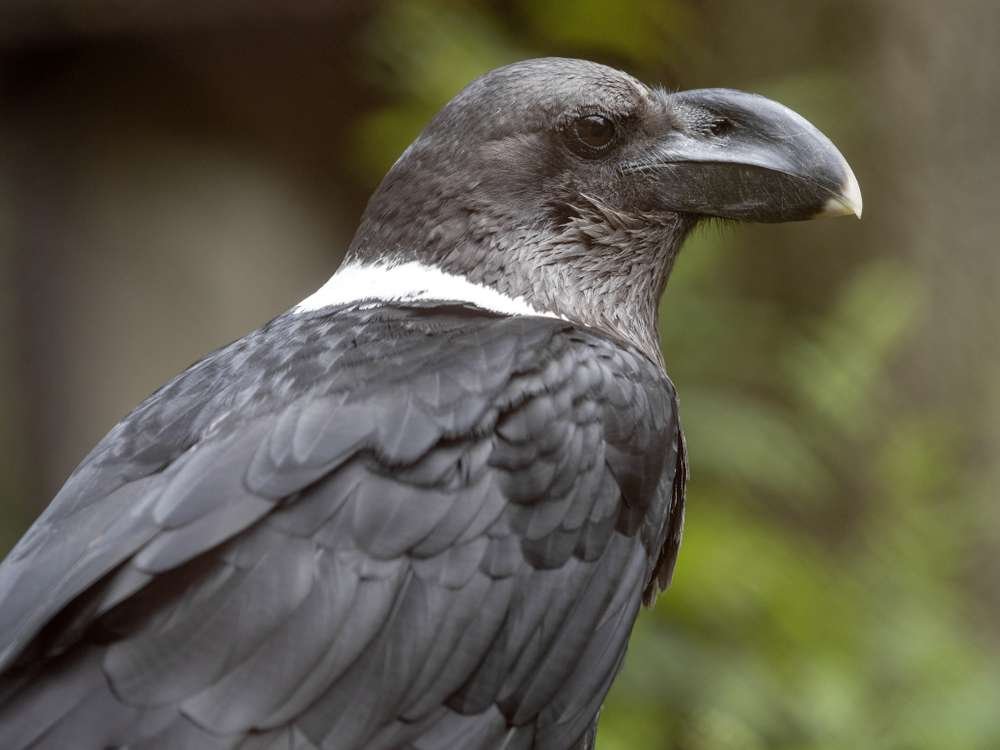White Necked Raven
( Mwankole )
- Corvus albicollis
- IUCN Status: Least Concern
- Trend: stable

- Kingdom: Animalia
- Phylum: Chordata
- Class: Aves
- Order: Passeriformes
- Family: Corvidae
- Genus: Corvus
Share:
General Information
The white-necked raven is smaller than the common raven and is often described as a raven with a sore throat, it has very similar calls to the common raven, but with a more husky note. It has a croak like the other raven species but with a more whispering note.
Fun Facts!
Description
The white-necked raven has a much shorter tail than the common raven, as well as a deeper bill with a white tip that is almost as strongly arched as that of the thick-billed raven. Though predominantly black, the throat, breast and neck show a faint purple gloss. There is a large patch of white feathers on the nape of the neck
- Wingspan: 75.2 – 86 cm
- Weight: 762 - 865 g
Ecology and Behaviour
The white-necked raven forages in back yards and gardens quite openly. Like all or most raven species, White-necked ravens form flocks after leaving their parents and, once fully matured, will pair off and form territories. They are often found in the company of other scavengers such as kites or vultures.
Diet
Most of this bird’s food is obtained from the ground, but it will take food from trees as well. It has been seen to drop a tortoise from a height on to hard ground, preferably on rocks, and then swoop down to eat it, or even pick it up again if not sufficiently broken. White-necked ravens will also readily take carrion from road kills. Fruit, grain, insects, small reptiles, peanuts and human food are also readily taken.
Reproduction
The white-necked raven nest in bowls of sticks lined with grass, hair, and wool, built mainly on cliff ledges but occasionally found in trees. They usually lay 3-5 eggs.
Conservation
It is listed by the International Union for Conservation of Nature (IUCN) as, ” Least Concern “.
Distribution and Habitat
The white-necked raven is native to eastern and southern Africa in open, mountainous country. It is quite commonly found in small towns and villages as long as there are mountains or hills for roosting and nesting relatively nearby.
Interaction with humans
No donation to this project yet.
| M | T | W | T | F | S | S |
|---|---|---|---|---|---|---|
| 1 | 2 | 3 | 4 | 5 | 6 | 7 |
| 8 | 9 | 10 | 11 | 12 | 13 | 14 |
| 15 | 16 | 17 | 18 | 19 | 20 | 21 |
| 22 | 23 | 24 | 25 | 26 | 27 | 28 |
| 29 | 30 | 31 | ||||


